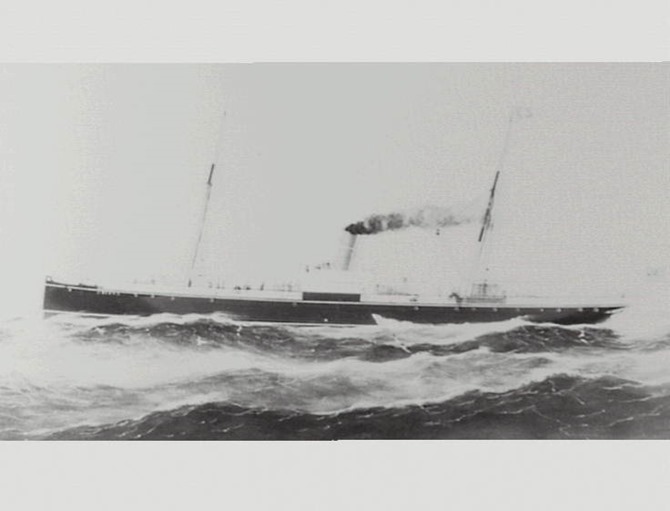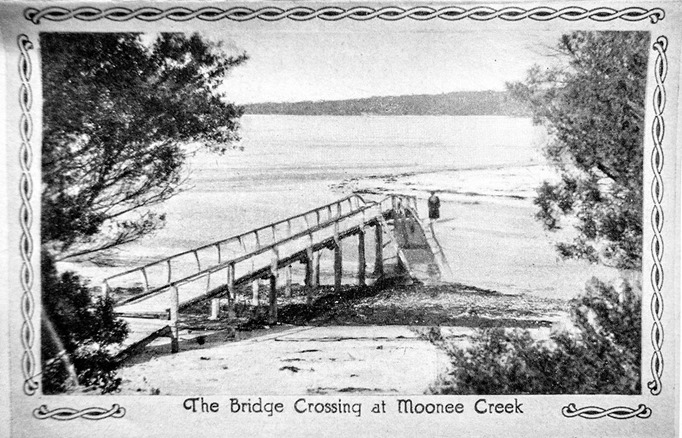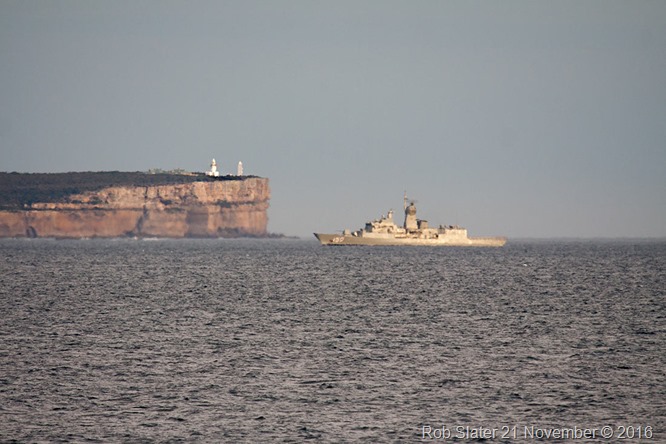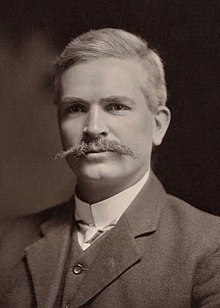29 November 2016
28 November 2016
S.S Bega
 |
 REF: Bega after construction in 1883. Mitchell Library/State Library of NSW. REF: Bega after construction in 1883. Mitchell Library/State Library of NSW. |
| Following on from a previous story about the highly respected skipper known as “Captain Bishop” this is a remarkable story of the sinking of the S.S.Bega while in his command under mysterious circumstances 4 miles off Tathra on the 5th of April 1908. The S.S Bega was a iron screwed steamer passenger Ship; 567 tons; 57.7x7.5x4.9 m.; Owned by Illawarra & South Coast Steam Navigation Co. Ltd.; Built at Russell & Co. In 1883. The Bega was along side the public wharf at Tathra loading passengers and cargo, which included over 2000 cheeses, butter, racehorses, prized livestock for the Royal Easter Show, 176 pigs, furniture, wool and a special consignment of £2000 in gold coinage (561 ounces in weight) for the Sydney Branch of the Commonwealth Bank. Before leaving Bega wharf at 7pm the ship was displaying a slight list to port but this didn't raise any concerns, on checking there was no water found in the hull and this wasn’t unusual and would soon be corrected by carefully adjusting the cargo once the vessel was underway. The weather was exceptionally clear and calm with a very slight roll from the north accompanied by a light northerly breeze. By 10pm the Bega was off the coast between Tanja and Cuttagee. The list to port had become decidedly worse, The captain ordered the sounding of the fore and aft holds and found no water, the captain ordered the crew to move some of the pigs to the starboard side, this worked for a short time, but the Bega then listed even worrse to the starboard side, he then ordered the pigs to be moved back to the port side, which became impossible as the pigs were now slipping on the steeply angled deck, he then ordered the men to jettison the pigs overboard in an attempt to arrest the list. As the wind was freshening from the starboard the captain decided to turn the vessel very slowly around so the wind and small swell were working to his favor, at first the ship remained upright but suddenly listed even worse to the starboard side.  This proved to be of no avail, the ship was listing bad and getting deeper by the head, suggesting water was getting in by the forepart somewhere. After the ship turned the situation quickly deteriorated, with water now entering the ship at a considerable rate by the port holes and hatches. Captain Bishop ordered all passengers to the deck and he moved swiftly to get the life boats in the water as the ship was now at an extreme angle making walking across her decks almost impossible. The vessel carried three lifeboats, one on the port side and two on the starboard side, because of the extreme angle only one on the starboard side was able to be set free of it's davits, this was most fortunate otherwise they would have had only one life boat with to many passengers. All the passengers women, children and men were transferred safely and with great skill and calm, life vests were fitted to all passengers as they left the ship...by this time the lee side was level with the water, unfortunately one passenger a Mr. David Clarke of Candelo, who had already been ill reportedly died of fright during the ordeal and his body was loaded into the now crowded boats. Captain Bishop despite repeated requests by his crew to leave the sinking ship stayed on board and insisted on one last look around the straining, growning vessel, each lerch of the vessel could have been it’s last. Second mate - "I had to call out to him to hurray up. He replied, 'I want to have a look round first" and he walked to the engine, looked around, then round the funnels, and into the saloon, before he came on to the raft. I heard him say, " Well, they have all gone, I suppose I should get away to. " He was the last to leave the ship." Young Sailor - "Yes he looked grand standing there, the last man ." "we all gave him three cheers on entering the raft" They pulled away from the ship to about 60 yards and aproximatly 20 minutes later the ships bow sank raising the stearn above the water and rapidly decended into the dark depths, as she did the lights on board went out, leaving a deathly stillness and calm over the scene. Captain Bishop - "The officers and crew worked splendidly, and order was thouroughly well maintained. If this had not been so, there must have been considerable loss of life. The successful launching of the boats and the placing of people in them, was entirly due to the splendid manner in which the officers and crew obeyed orders." The two boats were lashed together so they would not be separated and the men started to pull for shore, this was extremely difficult as the boats were full of water almost up to their waists. everyone not rowing bailed using whatever means they had...the ladies resorted to using their skirts and by this means they kept the boats afloat and moving, as morning drew near it became very cold, limbs were shaking and teeth chattered, the boats were very crowded, the dead body took up a lot of room and people had to sit on the body, people took turns at standing up and stretching their legs one at a time, any more could have turned a boat over.. Second mate - "I was pulling nearly all of the 11 hours. and I had to rest my feet under the dead man's arm pits." During the ordeal Captain Bishop kept spirits high by calling on everyone to sing songs like "Pull for the shore sailors, We won't get home till morning, and Good-bye Sydney Town." . Young sailor - ' Captain Bishop is a great old chap. He kep his cool all the time, and seemed to think of everyone. When we were on the raft, he use to call out now and then, 'Common boys, pull up." and we seemed to be able to pull twice as hard." Because of the winds it was useless to try and pull directly towards shore, Captain Bishop made the decision to use the current and the slight wind to as much advatage as they could. After 11 hours of rowing and thirteen miles from the place where the ship went down at daybreak they found themslves only 300 yards from shore, but it wasn't until 8 o'clock before they could finally land on a sandy beach. The survivors stripped off their wet cloths and layed them out in the sun to dry, and others took to running about to get the stiffness out of their legs. Crew man - "We ran about on the beach to get rid of the stiffness, we must have looked like a bunch of savages," The Captain walked a mile to the nearest farm house...sending one of the crew ahead, he allerted the farmer a Mr. Koellener who immediatly left to raise the alarm, upon arrival at the farm house the farmers daughter had prepared a bowl of porridge for each person. Captain Bishop - "My word the food was acceptable." Captain Bishop was asked why and how his ship so mysteriously sunk.  Correspondent - 'do you think there is anything suspicious in the affair ?' " Correspondent - 'Did it occur to you to beach the steamer ?" The Bega was recently examined by the Department of Navigation that report states. The mystery of why a first class ship like the S.S Bega suddenly foundered in favourable weather will forever remain another maritime mystery. Marine Enquiry Conclusion. 20th June 1908. The last words are from Captain Bishop - "Had the weather been rough there would not have been many of us left to tell the tale". REF: NSW Heritage Office – Follow this link to read how the Heritage of a wreck of this nature is handled, most informative. |
 REF: http://picclick.com.au/ss-BEGA-Illawarra-S-N-Co-Sydney-201708978988.html REF: http://picclick.com.au/ss-BEGA-Illawarra-S-N-Co-Sydney-201708978988.html |
| Diving on the S.S Bega. |
| This is an interesting video of a group of divers visiting the remains of the S.S Bega. |
|
|
26 November 2016
The C-17A Globemaster III visits Jervis Bay.
| Jervis Bay had a rare visitor on Friday the 25th November, The impressive Royal Australian Airforce |
 |
 |
| The C-17A Globemaster III provides Air Force with an unprecedented capacity for strategic air lift. It allows Australia to rapidly deploy troops, supplies, combat vehicles, heavy equipment and helicopters anywhere in the world. The C-17A Globemaster is a high-wing four-engine heavy transport. It has three times the carrying capacity of the C-130 Hercules, allowing Australia to rapidly deploy troops, supplies, combat vehicles, heavy equipment and helicopters anywhere in the world. It can carry up to 77 tonnes, ranging from an Abrams Tank, four Bushmaster vehicles, three Black Hawk helicopters, or be converted to an aero-medical evacuation capacity. Based at RAAF Base Amberley, the eight C-17As provided the backbone of the air link for Operation SLIPPER in Afghanistan. Capable of landing on dirt strips as short as 3,500 feet, it carried supplies and personnel between Australia and the Middle East. In addition to supporting personnel on deployments, Air Force C-17As have been an integral part of disaster relief and humanitarian missions. Recent activities have included Operation QUEENSLAND FLOOD ASSIST, Operation CHRISTCHURCH ASSIST, Operation PHILIPPINES ASSIST, Operation SOUTHERN INDIAN OCEAN, Operation BRING THEM HOME and Operation OKRA. |
| Ref: http://www.airforce.gov.au/Technology/Aircraft/C-17A_Globemaster/?RAAF-h0719xJ/eXjMFO8eLULT2D7U+C9pXnFB |
24 November 2016
A captain named Bishop.
| A life on board any sea going vessel in the days before radio communication was possible between ships, and ship and shore, meant men had to be resilient, brave and self reliant. |
 |
| In 1917 a seaman known as Captain Bishop died quiety in Sydney, captain Bishop was remembered as a fine captain and was very popular with other skippers and the travelling public who put their lives, hopes and dreams in the hands of the crew everytime they boarded a vessel and put to sea. Captain Bishop spent many years in the service of the Illawarra and South Coast Steam Navigation Company. This meant he was a regular visitor to many of the coastal towns on the south coast, transporting valued cargo, livestock, and people between ports. In a long career at sea he would have had many adventures, and I'm sure he would have been a very interesting man to talk to. Proper preperation is essential to conduct a safe trip at sea, foremost the captains were reliant on fair weather, which in those days was more based on a captains experience and knowledge than the accurate forecasts we have today. Well maintained machinery and an experienced engineer were essential to get to their destinations. In what could either be described as bad luck or good luck depends on how you look at it, not everything went to plan for Captain Bishop. He was chief officer on the Kameruka when she ran aground at Broulee near Moruya, and became a total wreck 1897; |
| Continue reading the stories about the S.S. Kameruka and the S.S. Eden |
 Evening news Sydney 1909 Evening news Sydney 1909 |
 |
23 November 2016
Firefly memorial service.
| Sunday November 27th 2016 will mark 60 years since Firefly aircraft VX 381 and 887 collided over Jervis Bay near Moona Moona Creek taking the life of two young pilots during training exercises. |
 |
| A memorial service will be held on the water this Sunday to pay respect for the two airmen that lost their lives over Jervis Bay on the 17th Novermber 1956. The second plane VX 381 despite loosing a large section of wing manage to ditch in Hare Bay near Callala Bay, both pilots managed to get out of the fast sinking plane into a life raft and survived this terrible disaster. Despite a very extensive search, the remains of 887 and the flyers Arundel and Fogarty were never recovered. VX 381 was discovered by Diver Charlie Pickering by accident in 1983. At the same time I got to know Charlie as a member of the Jervis Bay Protection Committee, the committee was set up by local divers to stop the mass destruction of the sea floor in Jervis Bay by uncontrolled scallop trawling. I dived on VX 381 soon after. The where about’s of the second plane 887 was always a mystery, and was often discussed by local diving friends. Local diver Greg Stubbs who dived on VX 381 in 2005 was inspired to try and find the missing plane, after many years of frustrating research and diving he found the shattered remains of Firefly 887 in small pieces scattered across a large area. This search led Greg to try and find out if either of the other two pilots from VX 381 were still living. By pure chance Greg managed to find one of the surviving pilots via information that came to him when tourists from England called into his mechanic business for assistance. Greg in conversation told them of his search and almost immediatly and unbelievably the tourists contacted people in England which led him to discover one of the remaining pilots. Sub-Lieut. David Eagles, R.N., of Yorkshire, is now 81, and was the pilot of VX 381. Greg has since managed to find and contact the navigator of VX 381 Midshipman Donald Geoffrey Debus, R.A.N., who now lives in Canberra. It's an amazing story, and a credit to one man's dogged determination to bring closure to the families and honor these young men who just by the very nature of their job risked their lives every time they took to the air. |
| Continue Reading. This will take you to other information concerning Firefly’s and Jervis Bay. http://jervisbaymaritimemuseum.blogspot.com.au/search?q=firefly |
 |
 |
22 November 2016
Prince Alfred disappears without trace.
 |
 |
| Another melancholy entry in the book of reports of wrecked, foundered, missing vessels and thier crews in the coasting trade along the south east coast of Australia. She left Sydney on the 22nd May 1891, in good ballast and trim, bound for Mosquito Bay, in Bateman's Bay, to load lumber and back with a crew of 4, Captain Charles Brown, master; James Kirklaldy, mate; native of Newcastle N.S.W ; L. Pascal, cook, native of France, 32 years of age; and J. Gilbert, able seaman, native of England, 27 years of age. Captain Brown leaves a wife and two children. Approaching Jervis Bay she ran headlong into increasing gale force southerly winds, driving a large dangerous swell. At the time the “May Howard and another unknown schooner” were in her company, all three vessels endeavoured to run into Jervis Bay for shelter, only the May Howard succeeded. The Prince Alfred and the other unknown vessel finding it impossible to enter, shaped for Sydney, running before the gale the unknown schooner reached Sydney safely, the Prince Alfred never arrived, and concerns were quickly raised about her safety. The Marine Court Inquiry concluded she had foundered in the heavy conditions which prevailed at the time, taking the 4 men with her to a watery grave. The ketch was insured for 500 pounds. This same storm claimed many vessels along the south east coast, including the much bigger |
 A ketch is a sailing craft with two masts. The distinguishing characteristic of a ketch is that the forward of the two masts (the "mainmast") is larger than the after mast (the "mizzen"). A ketch is a sailing craft with two masts. The distinguishing characteristic of a ketch is that the forward of the two masts (the "mainmast") is larger than the after mast (the "mizzen"). |
| The Mosquito Fleet. |
| Known as the Mosquito fleet because of there relatively small size, the working sailer of the Australian coast is undoubtedly the ketch. Formerly it was the cutter, but the great mainsail, unless with a strong crew, proved so unwieldy and difficult to handle in heavy weather that gradually the "ketch" or "yaul-rig" became the vessel of choice. |
21 November 2016
Ships in the bay.
17 November 2016
Jervis Bay Naval College.1911.
16 November 2016
14 November 2016
Jervis Bay.
12 November 2016
Old postcards of Jervis Bay.
 |
| Moona Creek Footbridge built in 1926…swept away by floods a number of times. Continue reading about Moonee Creek or Moona as the locals call it. |
 |
|
|
| If your walking around the foreshore on the northern side of the creek, keep an eye peeled for the remains of some of the old footbridge stumps that are still surviving 90 years later. They can still be seen poking out of the rocks at low tide. If you follow the link above you will see a couple of photograps that will give you a hint what to look out for… |




















